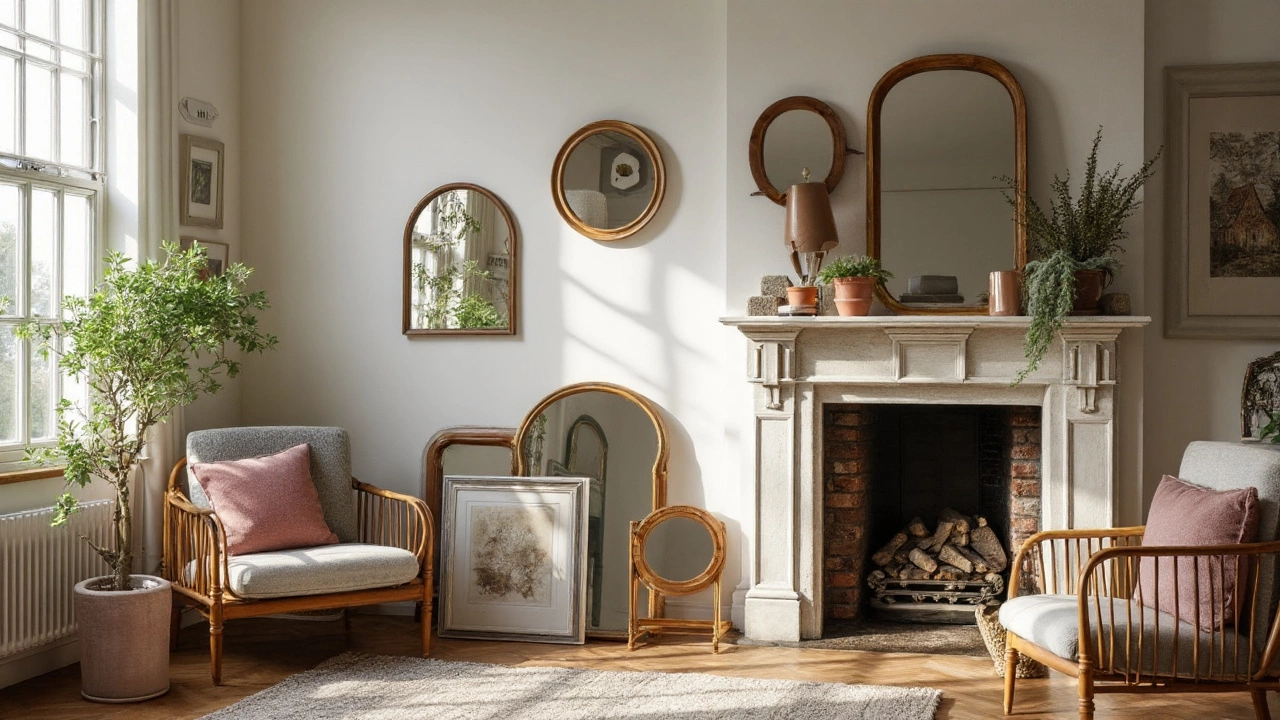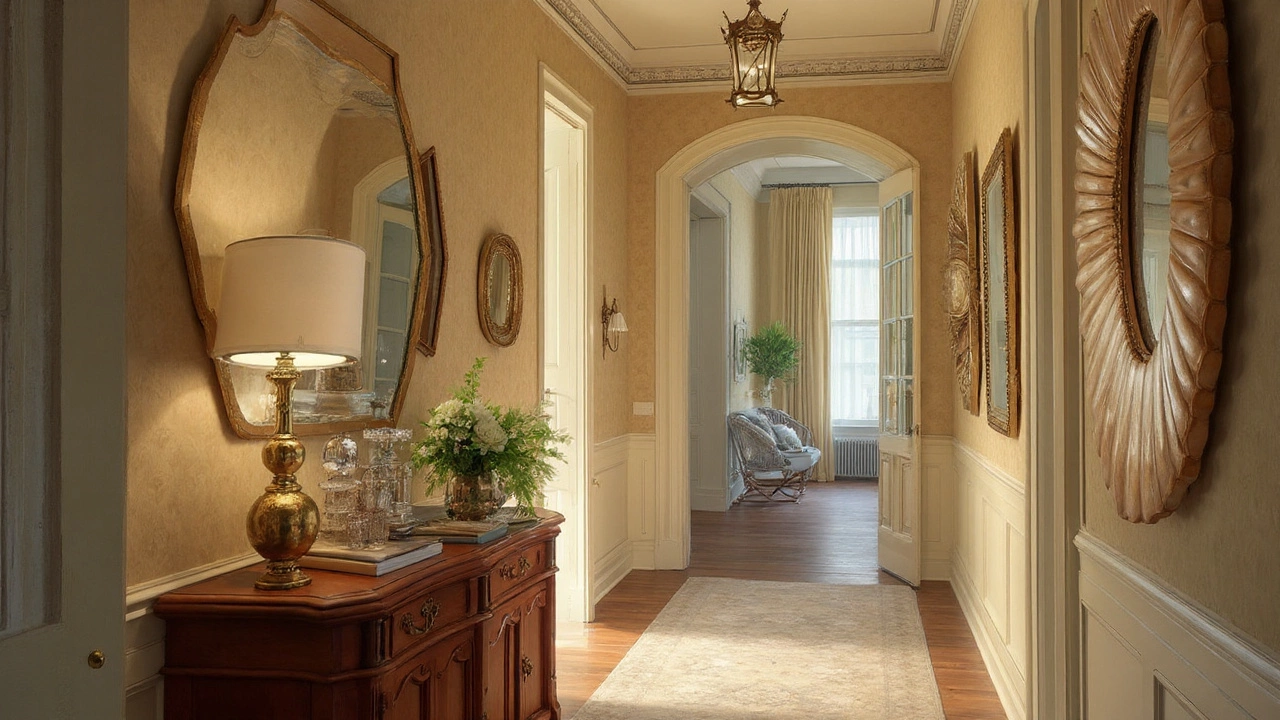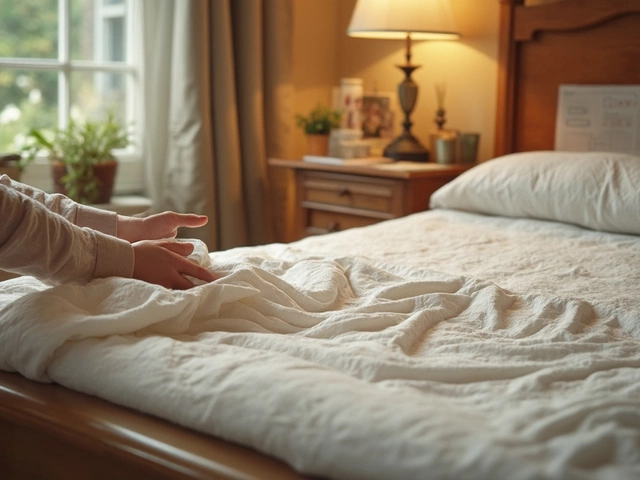Ultimate Guide: Choosing the Perfect Mirror Shape for Your Space

You probably don’t realize just how much a mirror’s shape changes the vibe of a room. Some people think a mirror is just a mirror, but that’s like saying jeans are all the same. Tiny detail, major difference. A simple swap from a rectangle to a circle can make your hallway go from “meh” to “whoa, what’s your secret?” Mirrors have a sneaky way of pulling a room together, or sending it off the rails. A tall sleek oval in a cramped entryway creates an instant feeling of space, while a chunky square in a tight corner can make you feel like you’ve shrunk. The shape can play tricks on the eyes—you can guide someone’s gaze, frame a view, or balance out awkward architecture, all by changing your mirror game.
How Different Mirror Shapes Impact a Space
Shape isn’t just about looks, it actually changes how you feel in a room. Let’s break down the classics. Rectangular mirrors are like the OG multitaskers. You’ll spot them everywhere, from bathroom sinks to hallway runners. Why? They create a sense of order and make walls seem longer. Want to sneakily add more height? Go for a vertical rectangle—suddenly, your ceilings look taller and there’s this subtle sense of elegance in the air. But throw in a horizontal rectangle and now the space feels wider. It’s a little visual magic trick. That’s why hotel lobbies and fancy restaurants love big horizontal mirrors.
Then there’s the circle. Round mirrors instantly soften a space. Perfect if your room is already full of lines and edges: square tiles, straight tables, angular sofas. A circular mirror breaks up all that geometry and messes with the routine, making the space feel friendlier. In design lingo, circles are seen as “inviting” and “calming”—they secretly tell your brain, “Hey, relax in here.” That’s why you’ll often find round mirrors in cozy bathrooms, entryways that need a warm touch, or over the mantel where you want people to feel at ease gathering.
Arched or oval mirrors are the curveball. They blend the height-boosting vibe of rectangles with the subtle softness of a circle. An arch above a console table turns a blank wall into a style moment. If you’ve ever seen one in a room with high ceilings, you know how it can practically elevate the entire space. It’s got history, too—arches date back to classical Roman architecture, so when you pick this shape, you get an instant hit of timelessness.
Don’t skip over the bold (almost shockingly fun) shapes: hexagons, sunbursts, wavy “blob” mirrors, and irregular organics that look like they melted onto the wall. These shapes bring energy, personality, and can even work as the main decor statement when your budget for art is running low. The real trick is knowing whether your space can handle that kind of spotlight. Too many competing shapes and your home can start to feel like a funhouse.
Choosing the Right Shape for Each Room
Walk into your living room or bathroom and glance around. Each spot in your home calls for a slightly different mirror shape. So, let’s sort this out room by room.
- Living room: Rectangular or oversized round mirrors over the couch are a classic. These boost light and reflect whatever statement you want (a nice vase, an uplifting view, or even just your favorite spot to collapse with a good book). For a more playful vibe, consider a cluster of smaller round mirrors or geometric shapes grouped together for a custom look.
- Bathroom: This is rectangle territory, for the most part. A wide rectangular mirror above the sink is the most practical—easy for morning routines, makeup, or shaving. If you love personality, a circle or oval softens all those hard lines from tiles and faucets. The trend for 2024 is elongated ovals—like stretched eggs—that offer a bigger viewing area with plenty of style.
- Entryway: Round and oval shapes rule here. They welcome you (and guests!) in, and they break up what is often a tight, utility-focused spot. Go for an oversized round mirror for serious drama, or try an arched mirror to make a narrow entry appear taller.
- Bedroom: Floor-length mirrors (rectangular or arched) are practical for outfits, but don’t forget the charm of a big circle over a dresser. Want to channel ultra luxury? Lean an enormous rectangle with a thin metal frame against the wall; that’s been the designer move since the late 2010s, and yes, it’s still a winner for 2025.
- Dining room: Sunburst and large unique shapes are total show-offs here. Center a big organic-shaped mirror on the main wall to reflect soft lighting, mood, and even your prettiest tableware. Fancy a little drama? Look up antique Italian-style convex mirrors—they create a dreamy, old-world vibe and are Instagram catnip.
Pro tip? Always look at what the mirror reflects. A well-placed reflection can double light, amplify greenery from outside, or make art multiply magically. But if a mirror bounces back clutter, choose a different wall.

The Psychology and Mood of Mirror Shapes
It’s wild how much a simple shape can mess with how we feel in a space. Designers have actually studied this—there are measurable mood shifts based on what shapes you’re surrounded by. Hard-edged rectangles and squares give a feeling of stability. You bring one in, and suddenly people use words like "grounded," "solid," and "structured" to describe your space. If you want your home office to make you feel organized and alert, in comes a sharp-cornered rectangular mirror.
Bring in circles or ovals, and watch the energy mellow out. Designers often recommend round mirrors for any room where you want to chill or gather: family rooms, bedrooms, places to relax. The eye naturally moves in a circle, so rounding off reflects movement—subtle, but your gut feels it. There’s also this theory that circles nod to nature: think of the sun, moon, or ripples in water. So if nature-inspired is your thing, rounding up your mirrors gives subconscious comfort.
But what about the wild cards? Wavy, fragmented, or sunburst mirrors look daring and rebellious. They signal creativity, and a willingness to skip the cookie-cutter route. These pieces are amazing conversation starters, but watch out—not everyone loves them. If your partner’s style is traditional or you crave calm, use the bold shapes sparingly. One unique piece can bring life to a room, but a gallery wall of wavy mirrors might tip fun into chaos.
Some studies show that mirrors facing each other—or mirrors clumped together—can mess with your sense of space and even throw you off balance. That’s why it’s best to pick just one or two statement mirrors per area and lay off the "gallery of reflections" look unless you want a funhouse effect. Mirrors angled toward outside views (sky, trees, city lights) can raise your spirits on dim days.
Mirrors can even play a role in ancient traditions. Feng Shui, for example, uses mirror shapes and placements to guide energy. Ovals are said to invite prosperity, and round mirrors are used to promote harmony. Whether you buy into that or not, it’s proof that humans have always felt the tiny emotional pull of these shapes.
Tips for Matching Mirror Shape to Your Decor Style
By now, you probably realize: there’s no one-size-fits-all answer to mirror shapes. The trick is matching your mirror to your existing style—or using one shape to push your room in a new direction. Here’s how to nail the look every time, no matter what your style personality.
- Modern & Minimal: Stick to rectangles, circles, or thin-framed ovals in black, brass, or chrome. Frameless mirrors also scream crisp and sophisticated. Think hotel-chic or Scandinavian calm. Try a long rectangular mirror shapes above your console to reflect lots of soft, indirect light.
- Traditional & Classic: Ornate rectangles with bevelled edges, antique oval frames, and arched mirrors with decorative tops are your best bets. Don’t shy from heavy wood frames if you want a stately vibe. Combine mirror shapes for a collected look—an arched mirror over a vintage dresser never gets old.
- Boho & Eclectic: Now’s your chance to go wild. Sunbursts, scalloped edges, waves, and curvy organic mirrors all add life. Don’t match shapes too closely—let the variety work for you. Try a cluster of small mismatched circles above a mantel or sofa.
- Industrial: Chunky rectangular mirrors with raw metal or reclaimed wood frames deliver grit. Round mirrors framed in iron also look cool, breaking up harsh lines from brick and pipes. A huge floor mirror (think: repurposed factory window, full-length) is pure drama and works as functional art.
- Coastal & Relaxed: Ovals and porthole-style circles painted in soft whites or blues fit perfectly. Weathered wood or rope-wrapped frames nod to nature and the sea. Large round mirrors bounce sunlight around, which is basically the whole point of coastal style: brightness and airy calm.
When shopping, always check the measurements twice—you never want to end up with a mirror that dwarfs your dresser or gets lost above a sofa. Hold a paper cutout of the mirror shape up on the wall if you’re unsure. And here’s a weird but handy hack: take a selfie in each store mirror you like, then scroll through after. You’ll quickly spot which shapes flatter you (and your space!) best.
Remember, trends come and go. In 2025, organic shapes and elongated ovals are everywhere, and so are bold frames. But at the end of the day, your home is about comfort, style, and showing off your quirky side—or your calming side. You get to decide. Choose your shape, hang it up, and give yourself a high five for every admiring glance that bounces your way.





